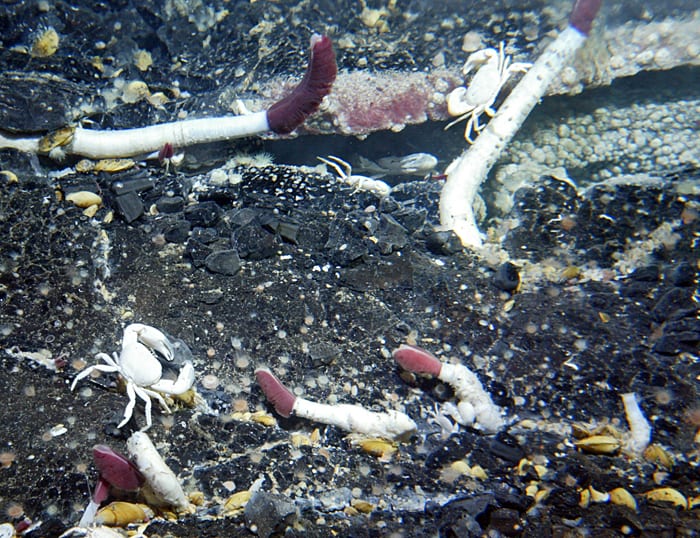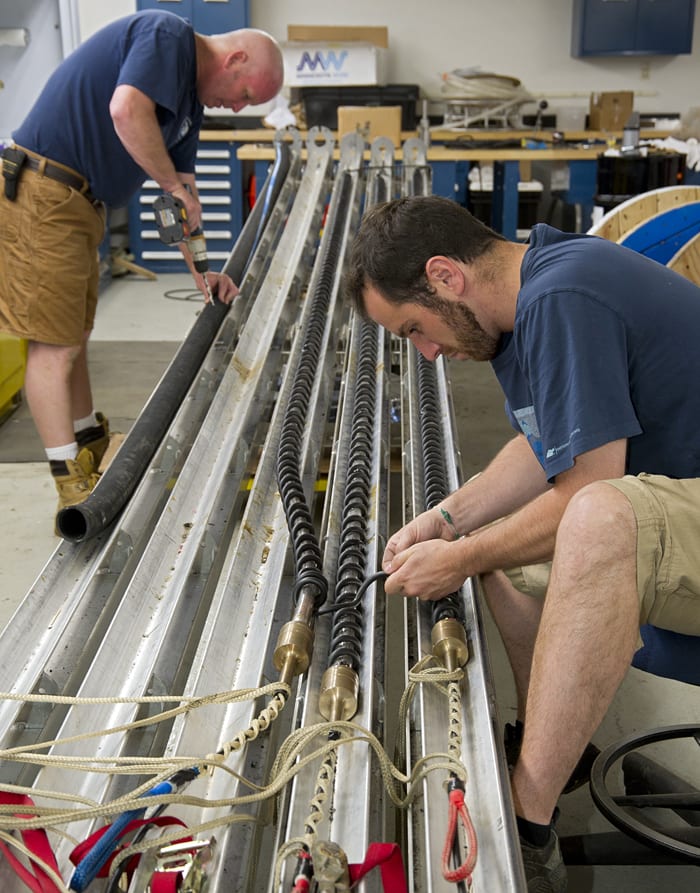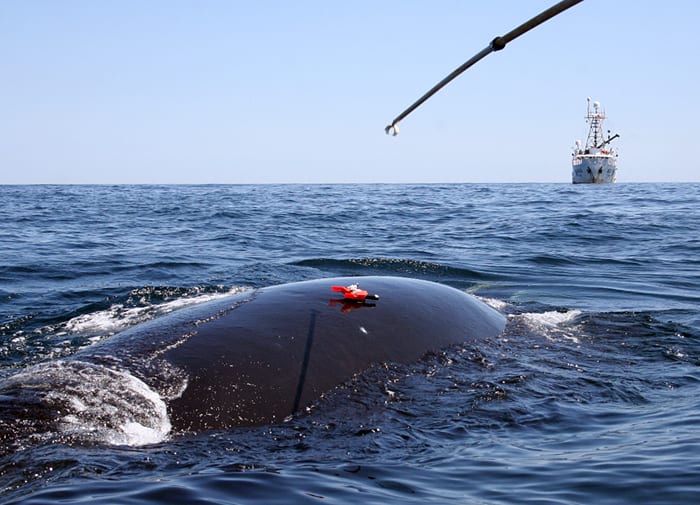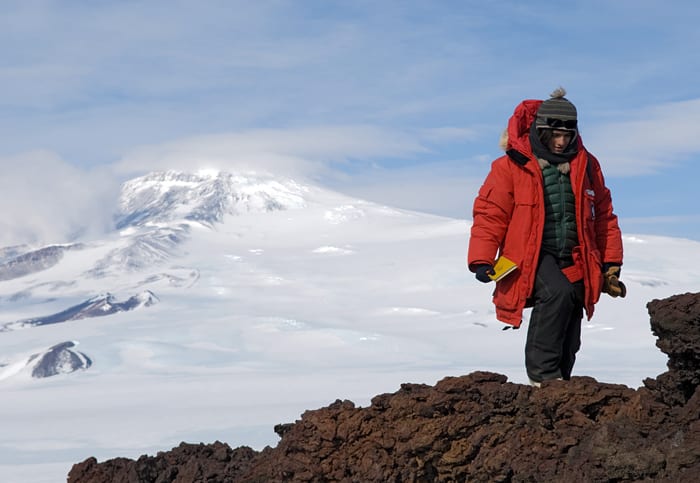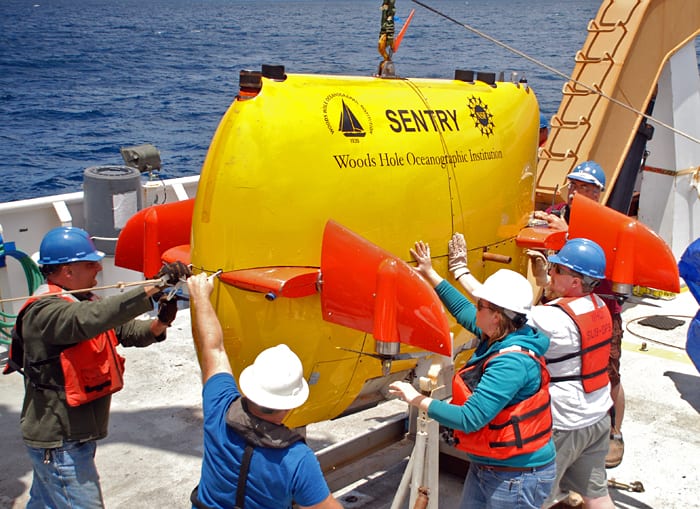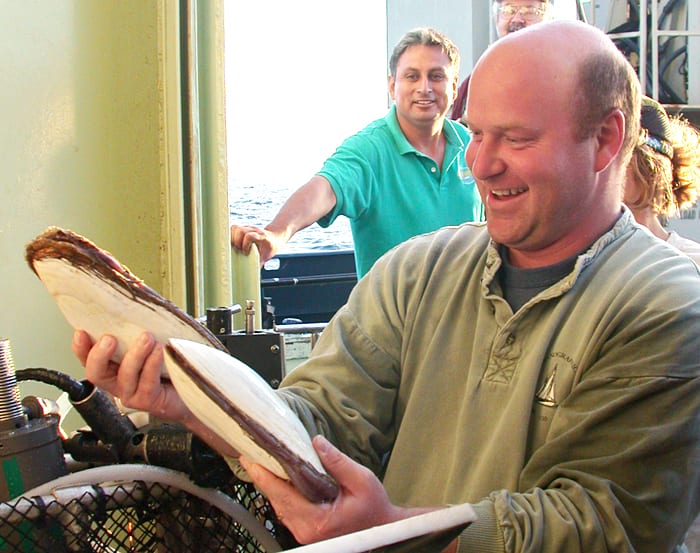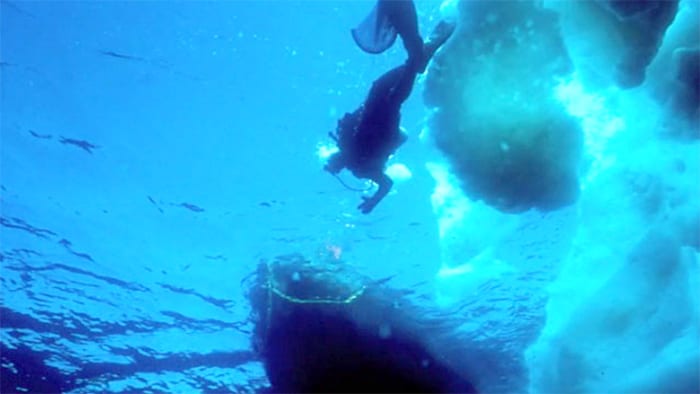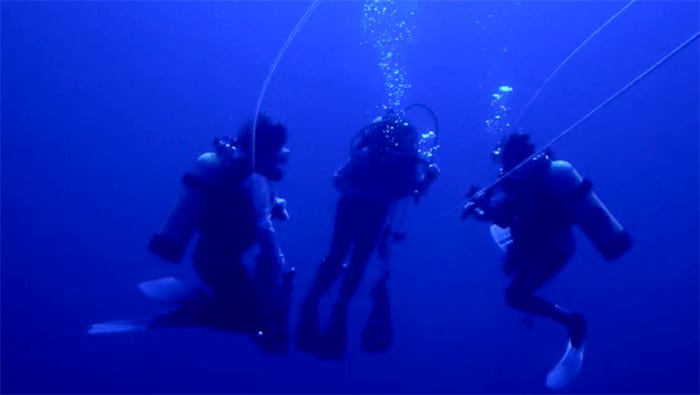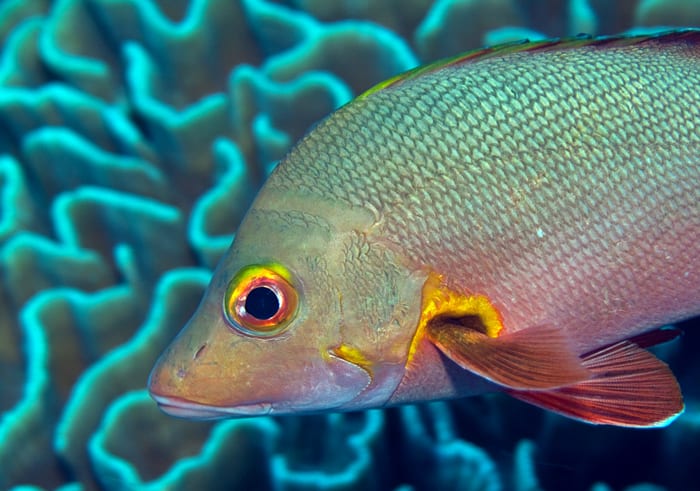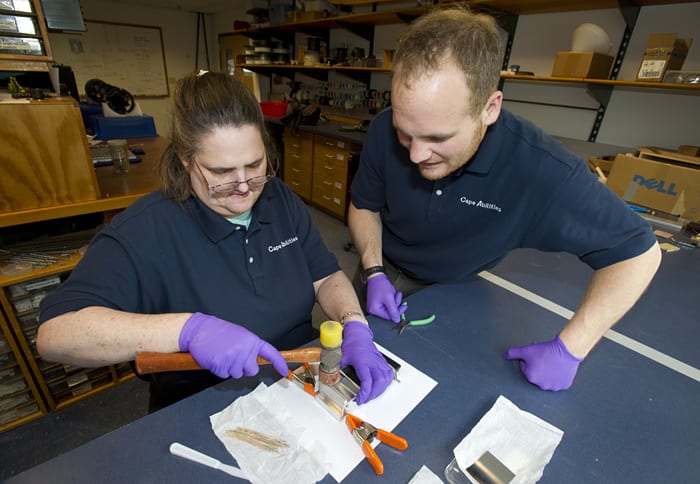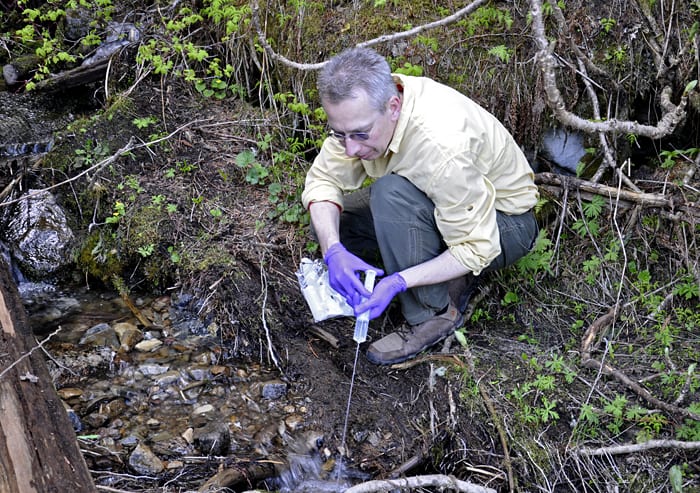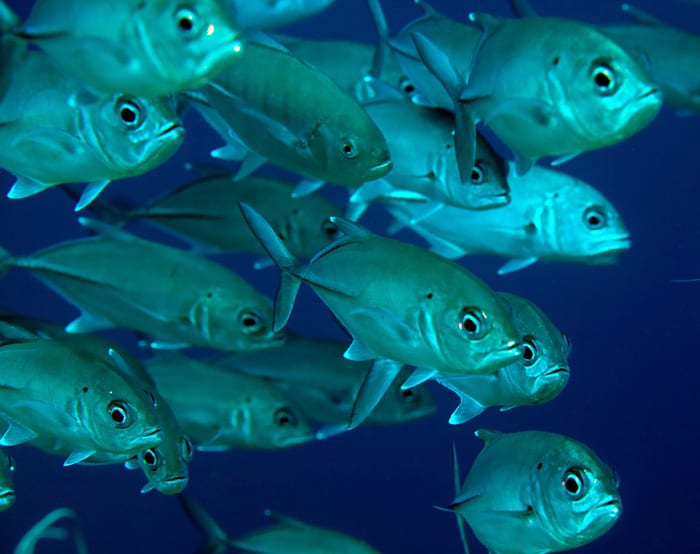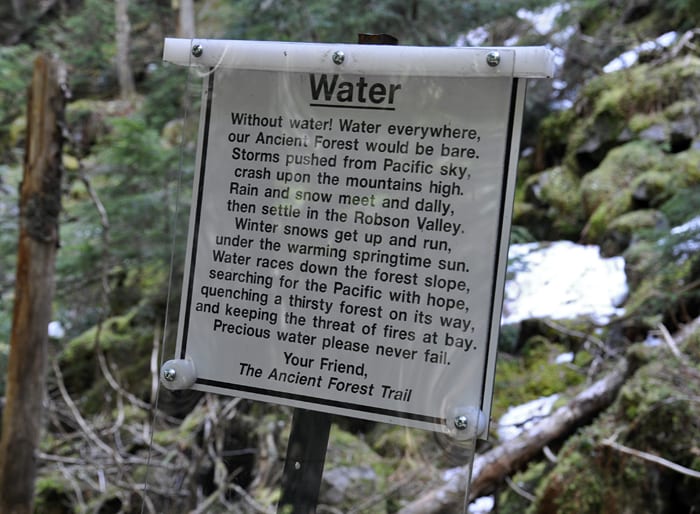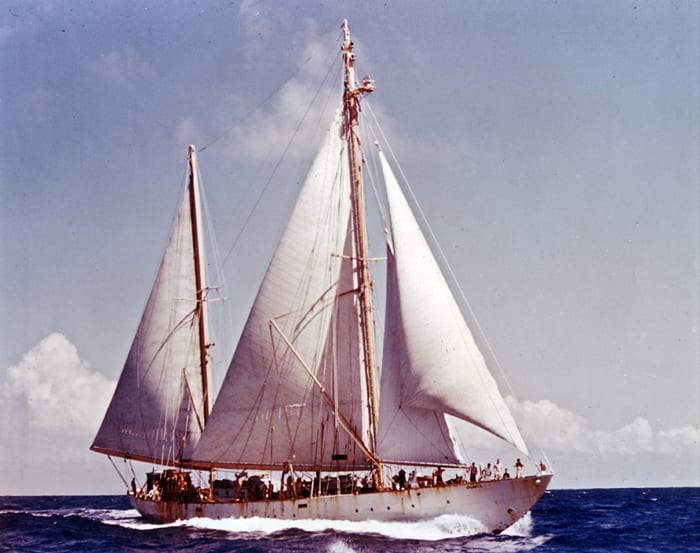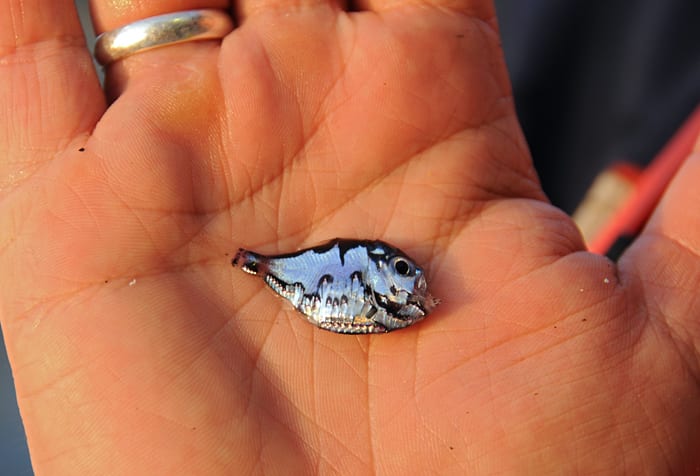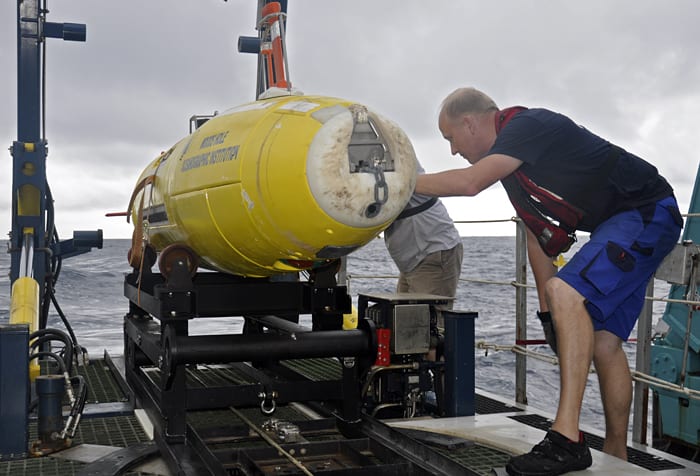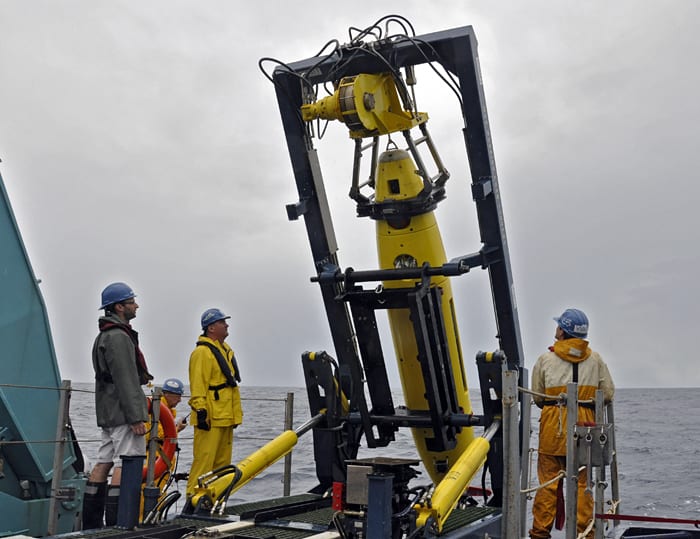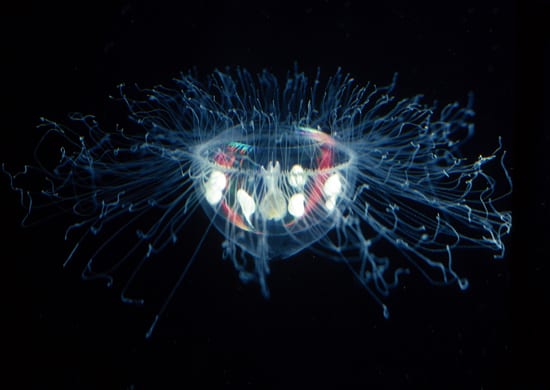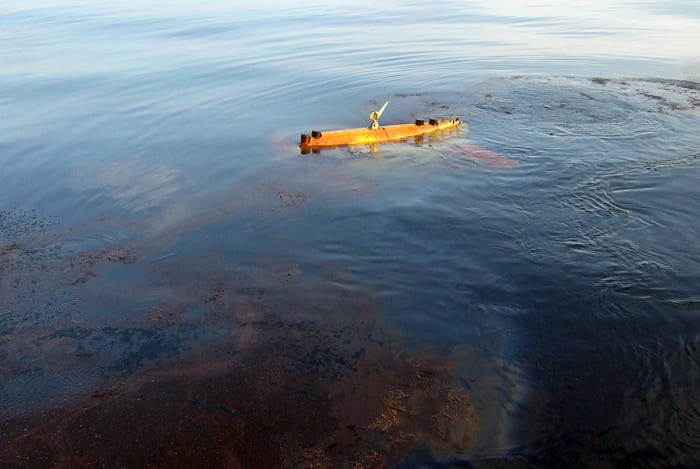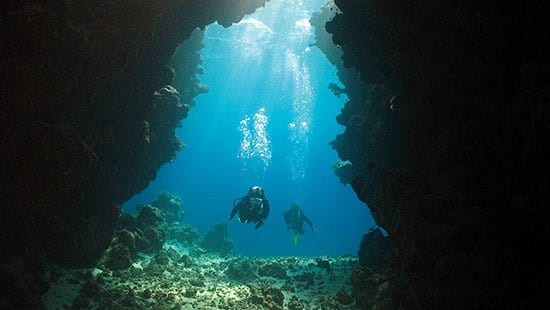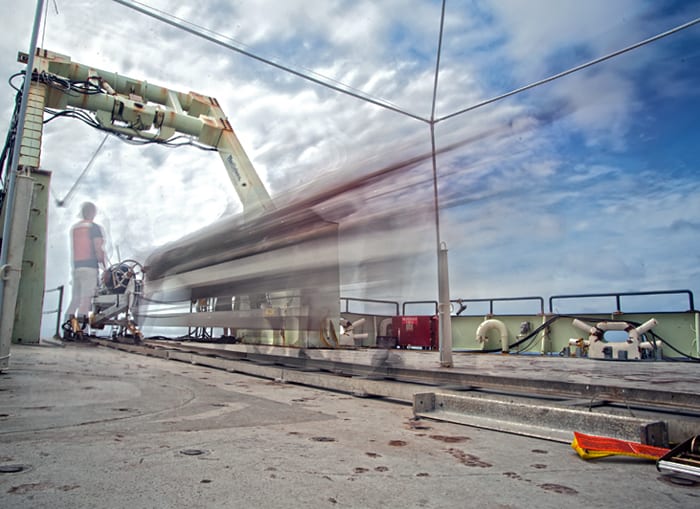Multimedia
Revisiting the Roses
Discovered in 1979 not far from the Galápagos Islands, the Rose Garden was an ocean scientist’s paradise, a hydrothermal vent site where six-foot tubeworms swayed in the shimmering breeze of…
Read MoreDispatches from the Arctic
Engineering Assistants Jim Ryder and Jeff Pietro assemble the tether of an Ice-Tethered Profiler (ITP). ITPs operate autonomously to acquire temperature and salinity measurements from the upper ocean under sea ice…
Read MoreRight Whale Ecology and Conservation
WHOI biologist Mark Baumgartner attaches an archival suction-cup tag to a North Atlantic right whale while the NOAA Ship Delaware II stands ready to begin environmental sampling in proximity to…
Read MoreHigh Up Down Under
Bundled against frigid Antarctic gales, MIT/WHOI Joint Program graduate student Andrea Burke strides over lava-strewn terrain around Mount Morning, an extinct volcano about 800 miles from the South Pole. In…
Read MoreLooking at Larval Fish
Joel Llopiz, a postdoctoral scholar in the WHOI Biology Department, studies how ocean food webs may differ at different latitudes. Working with fish ecologist Simon Thorrold, Llopiz analyzes isotopes in…
Read MoreSentry Lends a Hand in the Gulf
One year ago, oil from the Deepwater Horizon oil rig finally stopped flowing into the Gulf of Mexico. In December 2010, the autonomous underwater vehicle (AUV) Sentry ventured to the…
Read MoreHappy as a Giant Clam
Tim Shank, a biologist at Woods Hole Oceanographic Institution (WHOI), was thrilled to get samples of giant clams retrieved by the Alvin submersible during a 2002 expedition to the Galápagos…
Read MoreCold-water Diving
This video highlights the focus and skill needed for scientific diving in cold water—where heavy gear, limited time, and extreme conditions make every task challenging.
Read MoreBlue Water Diving
Learn how scientists use specialized diving techniques to study fragile, transparent animals like jellyfish in the open ocean.
Read MoreHave fins, will travel
The paddletail snapper (Lutjanus gibbus) gets around. Its habitat is reefs, and it can be found in tropical marine waters from the Red Sea, throughout Micronesia, north to Japan and south to…
Read MorePartners in Science
Cape Abilities project manager Trevor Harrison (right) works with Carol Dimock in WHOI scientist Rob Evans’ lab. Evans is partnering with Cape Abilities, an organization that supports people with disabilities…
Read MoreWhere River Meets Ocean
WHOI geochemist Bernhard Peucker-Ehrenbrink samples a small stream in the “Ancient Forest” of the upper Fraser River basin as part of the Global Rivers Project. The region in British Columbia…
Read MoreSummer School
A school of Caranx sexfasciatus (bigeye trevally) swim in Kimbe Bay, located on the north shore of the island of New Britain, Papua New Guinea. Part of the famous Coral…
Read MoreSign of the Times
This intriguing trail sign greeted the Fraser River Expedition led by WHOI’s Bernhard Peucker-Ehrenbrink in May in the woods of western Canada. The expedition was part of the Global Rivers…
Read MoreWell Done, Atlantis!
Today marks the planned final launch of the space shuttle Atlantis and NASA’s final shuttle mission. Atlantis is named for WHOI’s first research vessel, a 142-foot steel-hulled ketch that sailed…
Read MoreA Fish In Hand
Stony Brook University marine biologist Hannes Baumann holds a hatchetfish brought to the surface in a net trawl off the northeast coast of Japan in June. Baumann and 16 other…
Read MoreReady for Launch
Fred Wendt of IFM Geomar and WHOI research specialist Mark Dennett (partially hidden) inspect the REMUS 6000 autonomous underwater vehicle owned by the WAITT Institute as it is positioned on…
Read MoreREMUS Away
WHOI senior engineering assistant Greg Packard (far left) helps launch a REMUS 6000 autonomous underwater vehicle in April 2011. The vehicle, owned by the Waitt Institute, was taking part in…
Read MoreBy the Jelly’s Red Glare
Have a bioluminescent Independence Day!(Photo by Larry Madin, Woods Hole Oceanographic Institution)
Read MoreResisting a Mess
How do animals develop resistance to toxic pollutants? WHOI biologist Mark Hahn and Isaac Wirgin of New York University have been studying how Atlantic tomcod have adapted to high levels…
Read MoreVisit from an Admiral
Rob Munier, left, WHOI vice president for marine facilities and operations, talks to Admiral Gary Roughead, the Chief of Naval Operations (CNO), during his visit to WHOI in June. In…
Read MoreTroubled Waters
In June 2010 WHOI personnel investigated the fate of oil from the Deepwater Horizon oil spill in the gulf of Mexico. WHOI’s ABE/Sentry group and scientists Rich Camilli and Chris…
Read MoreShallow Water Diving
Scuba gives researchers time and access to study reefs, fish, and seafloor up close.
Read MoreScience in the Fast Lane
Life aboard a research vessel moves quickly. In this time-lapse photo from the R/V Knorr, Chief Scientist Ruth Curry oversees the deployment of the High Resolution Profiler (HRP) in the western…
Read More
